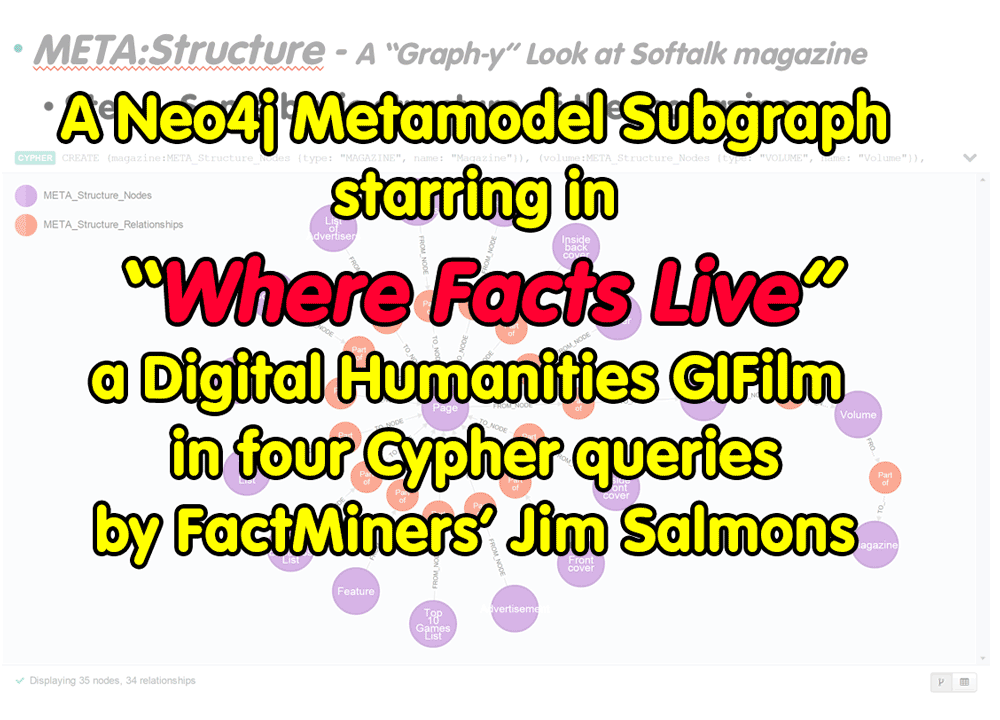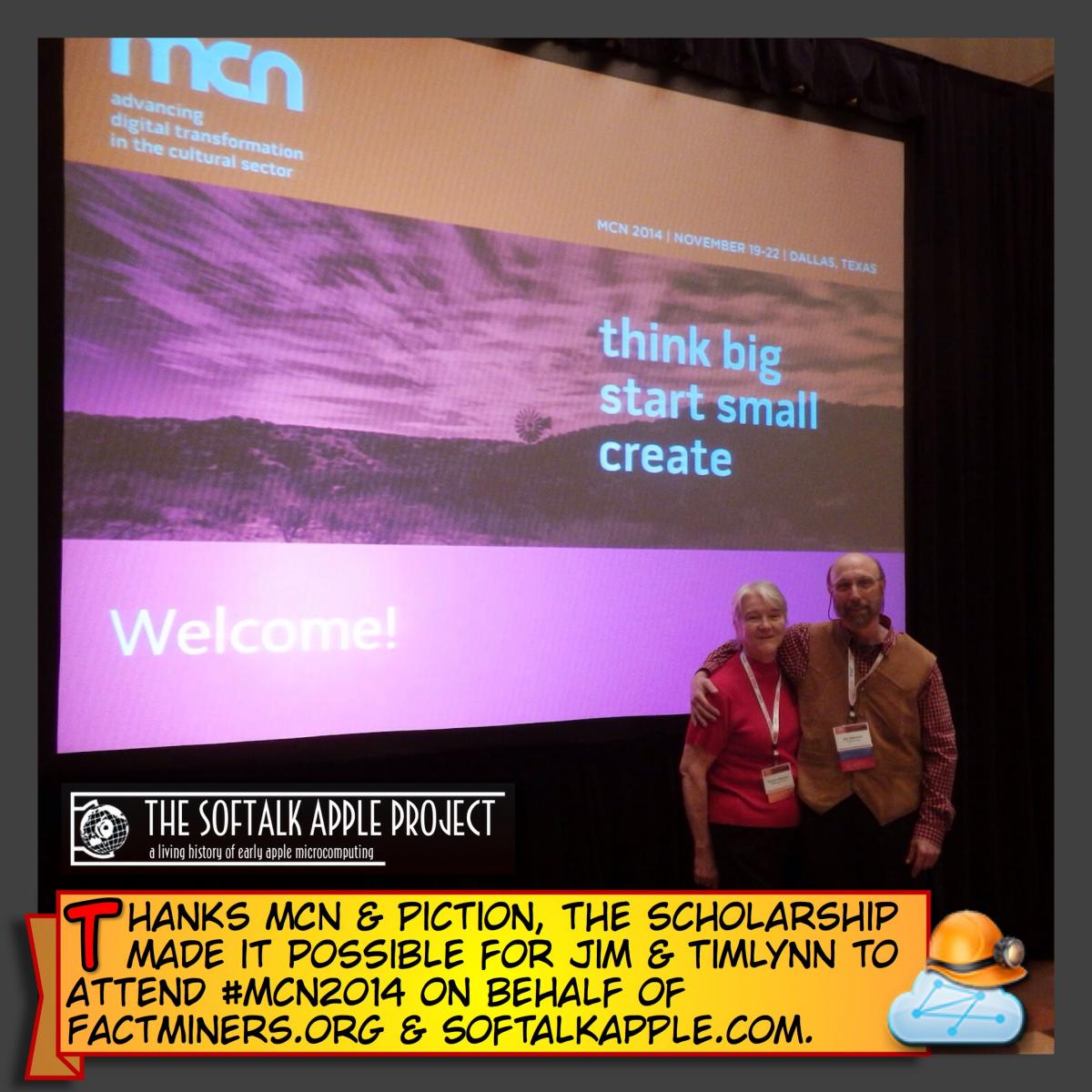We invite you to view the Neo4j-based "GraphGist Edition" of our recent #MCN2014 presentation about FactMiners and The Softalk Apple Project at the annual conference of the Museum Computer Network.
We again thank the Museum Computer Network Association and PICTION for sponsoring our Emerging Professional scholarship that enabled Jim Salmons and Timlynn Babitsky to attend the conference on behalf of our projects to learn, network with Kindred Spirits, and make our presentation to the museum technology community. The opportunity to attend this excellent conference was phenomenal and will be a source of enthusiasm and inspiration for our continued evolution of our grassroots Citizen Science/History projects.
What is the GraphGist Edition?
In the Open Source developers' world and most notably in the GitHub.com community, a gist is most usually written as a convenient document-based "how-to" or helpful short explanation about a useful snippet of programming code or a programming design or method that can be served in a "live example code" format. Folks interested in Python write Python-based gists, Ruby folks do Rudy-based gists, and so on.
In the Neo4j community, we have an incredible learning/sharing "live document" format called a GraphGist. The Neo Technology documentation team developed this clever server-based technology and documentation format standard to facilitate exploring and sharing ideas and techniques using Neo Technology's Open Source Neo4j graph database.
By writing to this standard and serving your GraphGist through the freely available gist.neo4j.org server, a writer can explore Neo4j's Cypher query language by showing and explaining queries that are then run server-side with the results being dynamically visualized in your browser view of the GraphGist. This document technology is obviously valuable for communicating to others in teaching and explanatory contexts. But GraphGists are also useful as an incredible self-learning and project-design documenting resource.
My #MCN2014 presentation includes a section that summarizes the core ideas of the metamodel subgraph design pattern. The "Where Facts Live" - Exploring the Metamodel Subgraph of a FactMiners Fact Cloud: GraphGist Edition provides a "live document" version of the four Cypher queries that I used to build the basic structure of a metamodel subgraph of Softalk magazine during my #MCN2014 presentation.
For those who may be interested in additional details and a "Hello, World" scale introduction to how a metamodel subgraph can be used for computational analytics as part of an Open Culture cognitive computing platform, see this two-part GraphGist on the metamodel subgraph pattern and this "Rainman/Sherlock" piece exploring the cognitive computing aspects of our project's mission.



